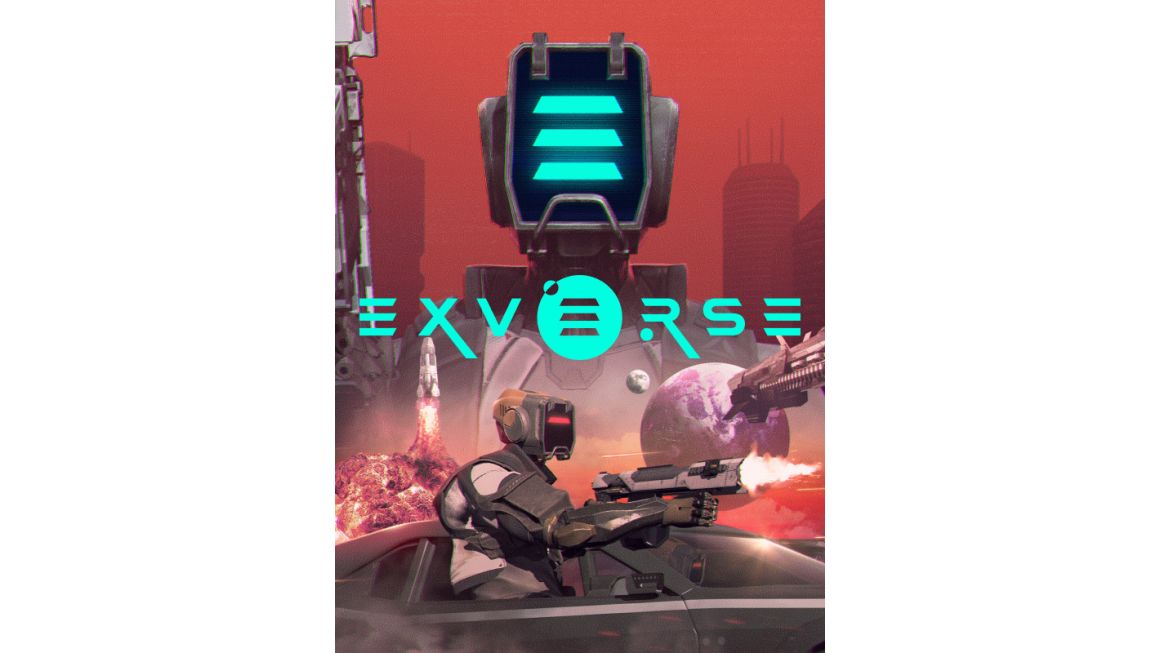Exverse

Dive into 2085 with Exverse, a gripping FPS that merges intense shooter gameplay with innovative Web3 mechanics built on Unreal Engine 5. Humanity clings to survival in space after a cataclysmic event rendered Earth a wasteland. As the planet's flora unleashed a deadly toxin, the race to save or abandon Earth divides humanity.
See all Specs  TeamPunk
Previous
TeamPunk
Previous

The year is 2085. Five years ago, Earth was suddenly cursed. Plants and fungi began to emit a deadly toxin that swiftly filled the atmosphere, eradicating all life on Earth. Millions of humans and animals died, powerless against this mysterious and sudden calamity. Forced to flee from death, humanity abandoned their home planet, finding refuge in orbital stations and spacecraft beyond Earth's atmosphere.
Yet, humanity did not give up. Scientific research conducted in space on samples of Earth's flora revealed that the toxins were not released by chance. Survivors and scientists from the stations united, launching an expedition to Earth. Their mission was to explore the dangerous zones, collect samples, develop purification methods, and, if possible, find ways to revive their home planet and discover the cause of the pandemic.
In this tense drama, where every decision impacts the future of humanity, survivors face a dilemma: restore Earth and preserve human civilization or find a new home beyond the Solar System.
Among the survivors, a split emerged. Some preferred the new order on the stations, where life had become safe and stable. They saw Earth only as a shadow of its past. Others believed in the possibility of restoration and return.
Both groups began active confrontations on Earth and in space, as their opinions on whether to restore the planet sharply diverged. The conflict grew more intense when both sides began to fight not only for control over Earth but also to eliminate those who stood in their way. People killed each other during expeditions, and some were willing to do any dirty work for money. Space piracy and mercenary work flourished.
Stations competed for access to resources and technologies, while survivor groups faced threats from pirates and bandits eager to seize and control their resources. Hackers and terrorists, using neurointerfaces, could hack into robot and computer control systems, leading to catastrophic consequences. Robots and automated systems, controlled via neurointerfaces, began to attack and destroy critical infrastructure for humans.
After some time and many failed expedition attempts, it became clear that finding a new home was a long and dangerous affair for humans themselves. Exploring new worlds and Earth was far from simple and safe. The long hours of data collection and analysis, besides the danger of being destroyed by enemies, also required many hours of oxygen supply and resource support, which was constantly lacking. Many expeditions were unsuccessful due to their short-term nature, or people simply died on new unexplored planets during their exploration. The remaining survivors rapidly dwindled. People could no longer afford to risk their most valuable resource—themselves. Humanity's fate teeters on the brink, and every step could determine the future of those striving to return to their native home.
Unexpectedly, long-forgotten terrestrial technologies came to the rescue. Among the corridors and dusty warehouses of the NAKASUKA corporation, thousands of old abandoned worker robots lay in a slow slumber. These creations, popular in the 2050s, were conserved and forgotten due to serious defects and unsuccessful modifications. Thanks to the management with special neurointerface technology, the robots, even in those distant years, were dubbed proxies. But due to the imperfection and instability of this technology at the time, many people went mad when connected to robots or never woke from the neuro sleep.
Now, people have turned their attention to these forgotten metal creations, which could be used as explorers. The NAKASUKA corporation, long bankrupt and forgotten, became an unexpected source of salvation for the surviving remnants of humanity.
An alliance of engineers, programmers, and survivors began to restore and literally resurrect the old robots. Their dusty bodies, 2050s technology deemed obsolete, were revived. People modified and improved the proxies, making them perfect machines for raids and planet exploration.
The work of restoring the old faulty proxies was long, difficult, and risky, but each restored proxy offered an additional chance for all of humanity. Robots, previously considered unfit, regained strength. They became useful and in demand again for people. Their programs were reviewed, and algorithms improved. Connecting to the old machines became safer, and outings with proxy robots became the norm thanks to the development of neurointerfaces, allowing people to control machines and computers with their thoughts. Neurointerfaces became an integral part of everyday life, giving people the opportunity to safely explore planets. After all, a proxy can always be repaired, modified, or replaced with a new one if something happens to the old one.
The proxy army becomes humanity's last hope for survival. Together with humans, they embark on Earth and previously unexplored planets, facing new dangers and trials. In this unusual alliance of man and machine, the goal is not only to survive but to reclaim their former place in the universe.
| Player Perspectives | First person |
|---|---|
| Game Status | 2 |
| Game Engines | Unreal Engine 5 |
Play your PC games anywhere
whether you're in another room
or miles away from your gaming rig.
or miles away from your gaming rig.
| Language | Audio | Subtitles | Interface |
|---|---|---|---|
| English (English (US)) |








